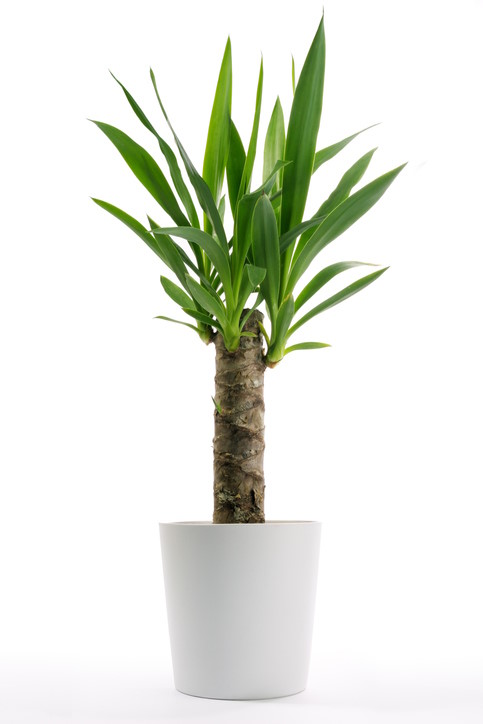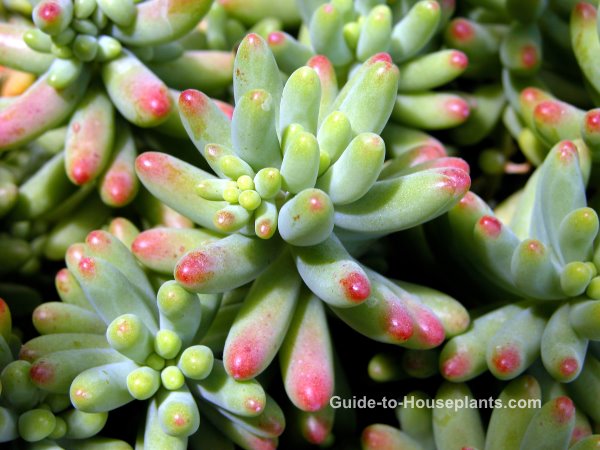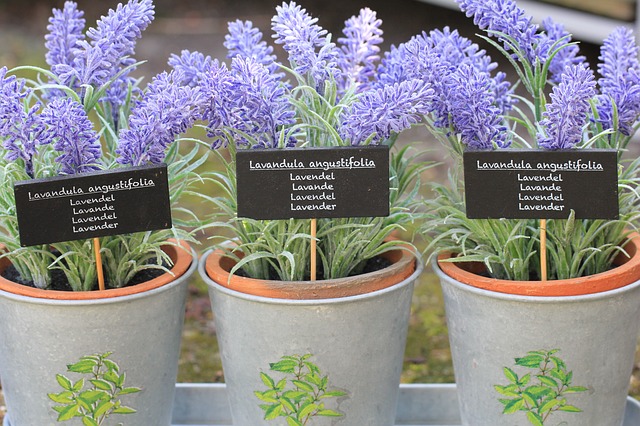Indoor Yucca Cane Plant Care
Rosettes of long, sword-shaped leaves atop a cane-like trunk make yucca cane plant bold architecture for a sunny room. Evergreen, it's a handsome accent for your home year-round. And you'll love this... yucca houseplant care is a breeze, once you get to know it.
Get to Know Yucca Cane Plant
Known botanically as Yucca elephantipes, this yucca species is native to southeastern Mexico, where it basks in a sunny, warm climate. Give your houseplant plenty of sunlight, warmth, and fast-draining soil -- you'll find it's easy to please indoors.
This yucca isn't like its spiky, desert-dwelling relatives, so no worries if your home doesn't match the arid, sun-scorched desert. You won't have to change a thing to grow this houseplant. What's more, yucca cane plant is tolerant of changing conditions throughout the year, such as light, humidity and temperature. (You'll find care tips below).
Yuccas are available in either its juvenile form, a single, stemless rosette of leaves in a pot... or as a mature, sawn-off cane-like tree with a few arching leaf rosettes at the top. Sometimes 2 or 3 thick, woody trunks of varying heights are potted together.
Long, sword-shaped leaves with pointed tips are evergreen and are typically 1 ft long, but may grow to about 2 ft and arch outward. The edges of the leaves are spineless, and not as sharp as others in this genus, giving Yucca elephantipes the common name Spineless Yucca.
Some cultivars are available to choose from. 'Variegata' leaves are broadly edged in white. 'Silver Star' has silvery gray-green leaves.
Place a young plant on a pedestal plant stand to show it off. Older plants make a dramatic statement in any room, so put one in a spot where it will get the attention it deserves. Those pointed leaves punctuating the air are something to admire.
How big will it get? In its native habitat, this species can grow to 30 ft tall. Indoors, grown in a container, you can expect your yucca cane plant to reach about 6 ft.
Will Yucca elephantipes bloom? Don't count on flowers indoors. Outdoors, mature yuccas may produce large clusters of fragrant, creamy-white flowers.
Is Yucca elephantipes poisonous? Yes, according to ASPCA, it contains saponins which are toxic to cats and dogs. This plant is not a good choice for a home with pets.
Houseplant Helps for Your Yucca Cane Plant
Droopy, yellow leaves? One thing yucca cane plant won't tolerate is soggy soil. Stem and leaf rot may be caused by overwatering or by cool, damp air. Keep yucca on the dry side, especially in winter when growth is slower.
Wondering when to repot? Yucca should be repotted when it becomes root-bound. Don't overpot -- use a pot 1-2 inches (2.5-5 cm) larger than the old one. Why? A too-large pot will retain too much water, leading to root rot. Spring is the best time to repot, when houseplants begin their most vigorous time of growth. Large plants can be top-dressed instead by replacing the top 2-3 in (2.5-5 cm) of potting mix with fresh mix.
What kind of pot have you got? Use a pot with drainage holes to allow fast drainage. Want to use a decorative container without drainage holes? Use it as a cachepot -- just slip the plain nursery pot into the cachepot. I put small rocks in the bottom of the cachepot to keep the inner pot above drainage water. Tall cane yuccas are top-heavy, so it's a good idea to use a heavy container to prevent toppling.
Something bugging your houseplant? Yucca seems to shrug off pests, but there are a couple that may invade. Watch for small, fuzzy, white specks; Mealybugs tend to cluster at the base of leaves and will cause damage by sucking plant juices. Also, watch for spider mites that are attracted to dry conditions, especially in winter. You may first notice fine webbing between leaves. Isolate an infested houseplant to prevent pests from invading your other indoor plants, and treat it right away.
Propagate yucca cane plant by removing the offsets that grow from the cane of mature plants. Pot them in potting mix and keep barely moist. Offsets will root easily.
 Image source vspn24 / istockphoto
Image source vspn24 / istockphotoIndoor Yucca Plant Care
Light: Prefers bright, indirect light year-round. You can move your yucca cane plant to the patio for the summer where it will get some direct sun every day, but keep the plant shaded from hot, midday sun.
Water: Water thoroughly, then allow potting mix to dry out between waterings. Be careful not to overwater, especially in winter when growth is slower. Use a container with drainage holes to prevent soggy potting medium, which can cause root rot.
Humidity: Average indoor (around 40-50% relative humidity).
Temperature: Average to warm room (65-80°F/18-27°C). If you scoot your yucca cane plant outdoors for the summer, don't worry -- it can take the heat. But bring it back inside when the temp drops to 50°F/10°C at night. Keep your houseplant away from heat/AC vents and cold winter blasts near doorways.
Soil: Yucca elephantipes prefers a loose, well-draining mix to allow air around its roots. Packed, wet medium will lead to root rot. A good potting medium is 1 part houseplant potting soil, 1 part perlite and 1 part horticultural sand.
Fertilizer: Feed with a balanced water-soluble fertilizer every 2 weeks in spring and summer. Don't feed in autumn and winter, when growth is slower.

